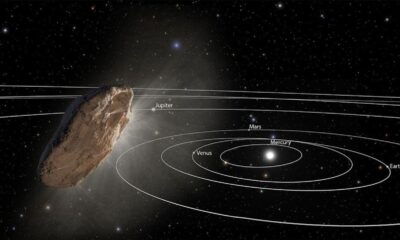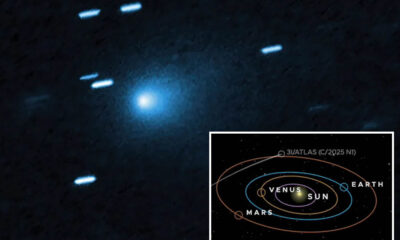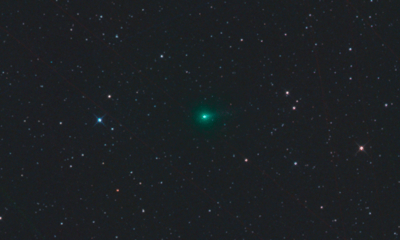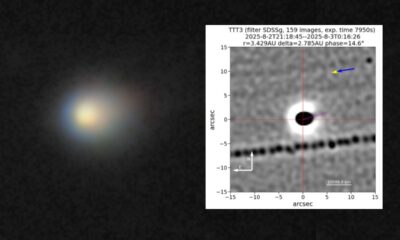Science
New Insights on 1977 Wow! Signal Linked to Mysterious Comet
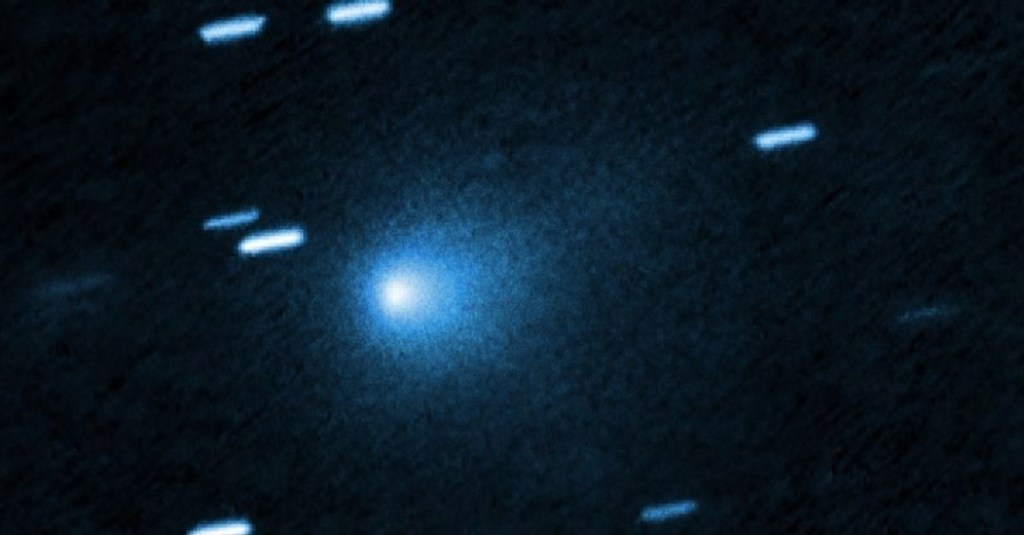
In a remarkable turn of events, recent analysis suggests that the enigmatic “Wow!” signal, which was detected in 1977, could be linked to a newly discovered comet, known as 3I/ATLAS. This signal, a 72-second burst of radio waves captured by a telescope at Ohio State University, has puzzled scientists for decades as it remains the only one of its kind ever recorded.
The “Wow!” signal was identified by astronomer Jerry Ehman, who famously circled the printout with a red pen and annotated it with the word “wow!” Since then, the search for an explanation has led to numerous theories. The latest comes from Avi Loeb, a Harvard astronomer known for his provocative views on extraterrestrial life. Loeb suggests that the signal may have originated from 3I/ATLAS, a comet discovered in 2023, which is only the third known object to visit our solar system from interstellar space.
Loeb’s hypothesis is built on the observation that both the comet and the “Wow!” signal seem to originate from similar directions in space. He calculates the probability of this alignment being random at around 0.6 percent, a figure he considers notably low. This correlation raises intriguing questions about the nature of both phenomena.
Despite Loeb’s enthusiasm, there are significant challenges to his theory. In 1977, the comet would have been approximately 600 astronomical units from Earth, translating to roughly 55 billion miles. For the signal to reach Earth from such a distance, it would require a powerful transmitter, potentially equivalent to the output of a nuclear reactor.
Moreover, no current telescopes have detected any transmissions from 3I/ATLAS, casting further doubt on the idea that it could be the source of the “Wow!” signal. In light of these challenges, Loeb is advocating for a comprehensive observational campaign. He proposes a constant surveillance effort of 3I/ATLAS, hoping to capture any signals that might confirm its origins or reveal it as a technologically advanced artifact from a distant civilization.
This proposal reflects a growing interest in the intersection of astronomy and the search for extraterrestrial intelligence. While NASA scientists remain cautious, attributing the comet’s unusual behavior to natural phenomena, Loeb’s perspective adds an engaging dimension to ongoing discussions about the possibilities of life beyond Earth.
As the scientific community continues to explore the mysteries of space, the connection between the “Wow!” signal and 3I/ATLAS serves as a reminder of the enduring allure of the unknown. Further research and observations may soon provide new insights into one of the most enduring questions in astronomy.
-

 Technology5 months ago
Technology5 months agoDiscover the Top 10 Calorie Counting Apps of 2025
-

 Health3 months ago
Health3 months agoBella Hadid Shares Health Update After Treatment for Lyme Disease
-

 Technology7 days ago
Technology7 days agoOpenAI to Implement Age Verification for ChatGPT by December 2025
-

 Health3 months ago
Health3 months agoErin Bates Shares Recovery Update Following Sepsis Complications
-

 Technology4 months ago
Technology4 months agoDiscover How to Reverse Image Search Using ChatGPT Effortlessly
-

 Technology3 months ago
Technology3 months agoElectric Moto Influencer Surronster Arrested in Tijuana
-

 Technology1 month ago
Technology1 month agoDiscover 2025’s Top GPUs for Exceptional 4K Gaming Performance
-

 Technology5 months ago
Technology5 months agoMeta Initiates $60B AI Data Center Expansion, Starting in Ohio
-

 Technology5 months ago
Technology5 months agoRecovering a Suspended TikTok Account: A Step-by-Step Guide
-

 Health3 months ago
Health3 months agoAnalysts Project Stronger Growth for Apple’s iPhone 17 Lineup
-

 Health5 months ago
Health5 months agoTested: Rab Firewall Mountain Jacket Survives Harsh Conditions
-

 Lifestyle5 months ago
Lifestyle5 months agoBelton Family Reunites After Daughter Survives Hill Country Floods

